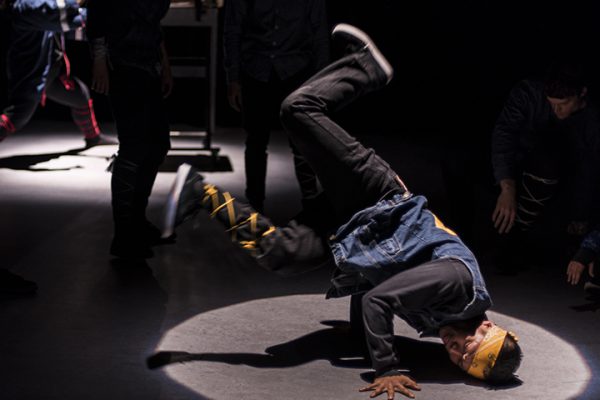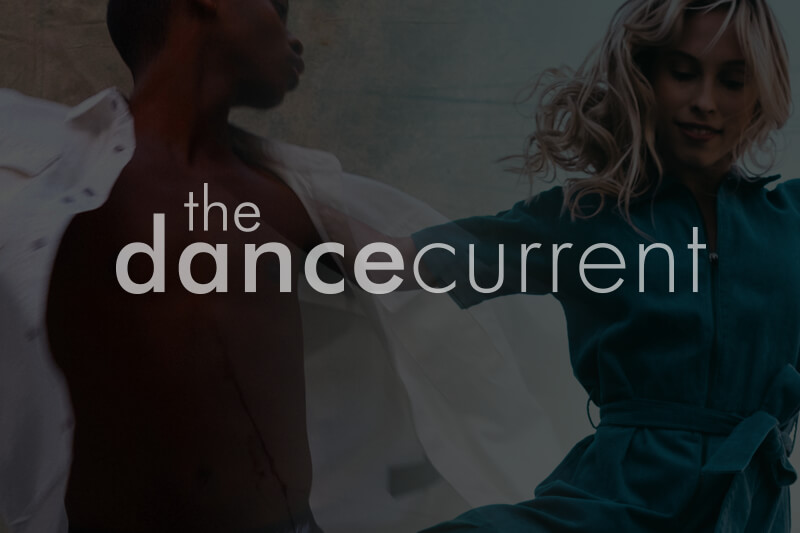As the recovery story goes, Ballet BC has adeptly pulled itself out and away from 2008’s crippling operating deficit. Led by the company’s magnetic artistic director, Emily Molnar, Ballet BC’s redemption narrative encourages a host of ballet-oriented rise-and-fall clichés, perhaps most enduringly the good old phoenix rising from ashes. I will spare you the drama and say instead, judging by the season opener, things seem good at Ballet BC, really good.
As an arts community, Vancouver has a tendency to rally behind cultural organizations once they are on the verge of collapse. This kind of audience brinkmanship is tough on organizations, but at least the community comes through when you really need them. Of course, everyone wants to be a hero, and, with any luck, the supporters will stay around once things are copasetic. Five years out from crisis, Ballet BC’s season-opening three-day show, Tilt, was close to sold out on the night I attended. A healthy, positive energy from the audience milling around was palpable. Molnar has the unique ability to get the public on board with Ballet BC, to make audiences feel like they are part of building something. Maybe I am jaded (or spoiled) but it is rare to feel genuine excitement pre-show, and this lobby had it in spades, no doubt in part due to the large number of children in attendance. Curiously, the ballet is one of the only-adult cultural events in the city that regularly hosts a critical mass of kids – I suspect this is a seriously underrated audience-development demographic for other arts programming in Vancouver.
With all the young bunheads in attendance, it was important that the company’s season opener offered three very strong contemporary ballet works, including two world premieres – Finnish choreographer Jorma Elo’s I and I am You, and Emily Molnar’s 16 + a room. This is certainly not the kind of ballet I went to when I was a kid. Molnar’s work developing a bold, contemporary and international ballet repertoire continues to pay off. The third work, Swedish choreographer Johan Inger’s Walking Mad, is a greatest hit from the 2012 season and it reflects the company’s commitment to participating in an international dialogue. While the choreographic engine is diverse, the interpretive artists are decidedly local – the majority of the eighteen-member company came up through Vancouver’s Arts Umbrella and have long ties to British Columbia. The points of connection between international choreographic repertoire and supporting local interpretive talent seems like a smart move for long-term sustainability, engaging both international and local contexts.
Ballet BC’s 2013/14 season started with the world premiere of I and I am You, by Boston Ballet choreographer in residence Jorma Elo. The work expresses a buoyant optimism; a dynamic movement vocabulary oscillating between athletic Balanchine-like angularity and reckless loose shapes that are by turns beautiful and comical. The energetic play between these two modes sends the work careening along, deep in conversation with a selection of Bach and Schumann. I and I am You possesses a period-drama quality, an old story executed in a way that is completely, strictly modern. I was reminded of both Evelyn Waugh’s novel of early twentieth century English manners, Brideshead Revisited (perhaps it was the men’s lovely pale gray morning dress pants) and also ballet’s historical link to Louis XIV of France, the Sun King, evoked quite literally by enormous lights lining the back of the stage, sun-like with glowing orange filaments.
These disparate references relate to the distinctly boyish energy present through the work, playful and bare-chested. While traditional ballet is often focused on the virtuosity of the female dancer, Elo’s latest offering played well to both the technical and expressive abilities of the men in the company. I and I am You demonstrates the way in which a choreographer of Elo’s international stature and experience is able to synergistically intertwine each element of performance – staging, interpretation, movement, musicality, costume – with singular focus. On its face the work appears quite minimalist, but this austerity is expertly manipulated to produce a complex and evocative experience. The work is undeniably beautiful in quite a traditional way for all its spastic undulations. Perhaps Elo’s greatest feat is maintaining the balletic sublime without any trace of superficiality.
On returning from intermission, things got dark. The second world premiere of the evening was Emily Molnar’s latest choreographic offering 16 + a room, an end-of-the-world adventure (pre- or post-apocalyptic – it’s open to speculation). In an interview with the Vancouver Sun, Molnar stated that she “… felt something strongly this year … a sadness in my bones, a feeling of both liberty and disappearance”. This unnameable feeling resonates strongly in 16 + a room. Through sharp, quick and darting movement, a sense of uneasiness, verging on panic, emerges as ensembles sprint in and out, on and off stage to the sound of helicopters overhead. The overarching feeling was one of circling – a repeating concentric type of movement, around and around, but where does it all lead? A clever physical way to ask big questions, themes of end times and dystopia that have been increasingly present across all art forms in the past few years. But if this is what the apocalypse looks like, count me in. 16 + a room is incredibly seductive, with hard, cold, diffuse lighting and costumes that once again employ visual austerity to convey a powerful concentration of artistic vision, rather than any lack. I can see what Molnar means by both disappearance and liberty – the situation she presents in 16 + a room is delightfully ambiguous – is this a nightmare or a fantasy? 16 + a room is difficult to pin down.
While I have focused this review on the two premieres, the third work of the evening, was Johan Inger’s popular Walking Mad, which premiered last season. I saw Walking Mad in 2012 and while I completely understand how and why audiences love it, the dance employs a level of whimsy that I just can’t get behind: Walking Mad possesses a wildly charming kind of theatrical irreverence that could make a Wes Anderson film seem ascetic. Nonetheless, there were undeniably many smiling faces during and after it was performed. Walking Mad is a valuable thing to have in the company’s repertoire.
Tilt was a very auspicious start to Ballet BC’s season, presenting two new works that are impressively challenging and engaging. If the program is characteristic of what stodgy old ballet is up to, Vancouver’s contemporary dance organizations better step up their game. With Molnar’s contract recently renewed for three more years and the addition of Executive Director Branislav Henselmann (formerly an executive producer with the legendary Michael Clark Company), increasingly ambitious contemporary programming is likely, as is continued international dialogue and maybe even some cross-disciplinary partnerships with Vancouver’s visual arts community (a specialty of the Michael Clark Company). And if Tilt is an indicator, this risen phoenix is going to be just fine. Very soon the complexity and quality of the work will completely eclipse any need to mention past institutional challenges.




